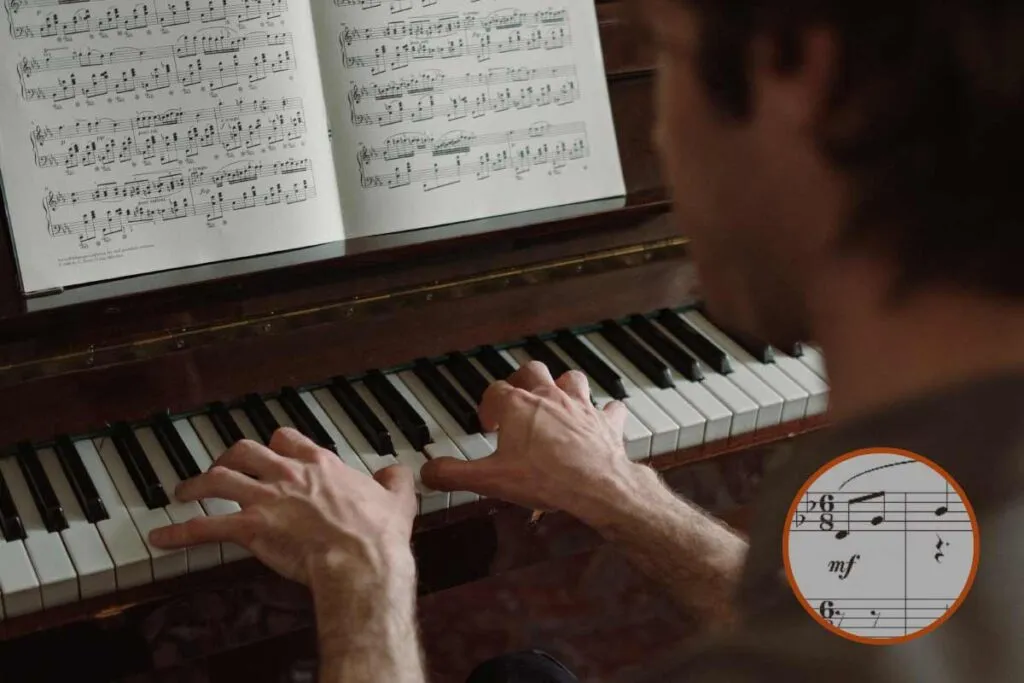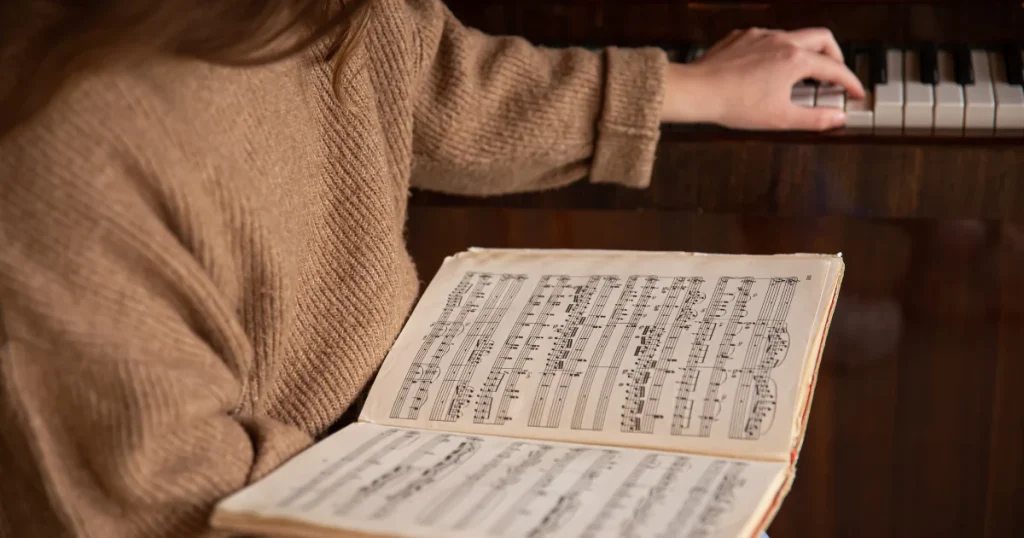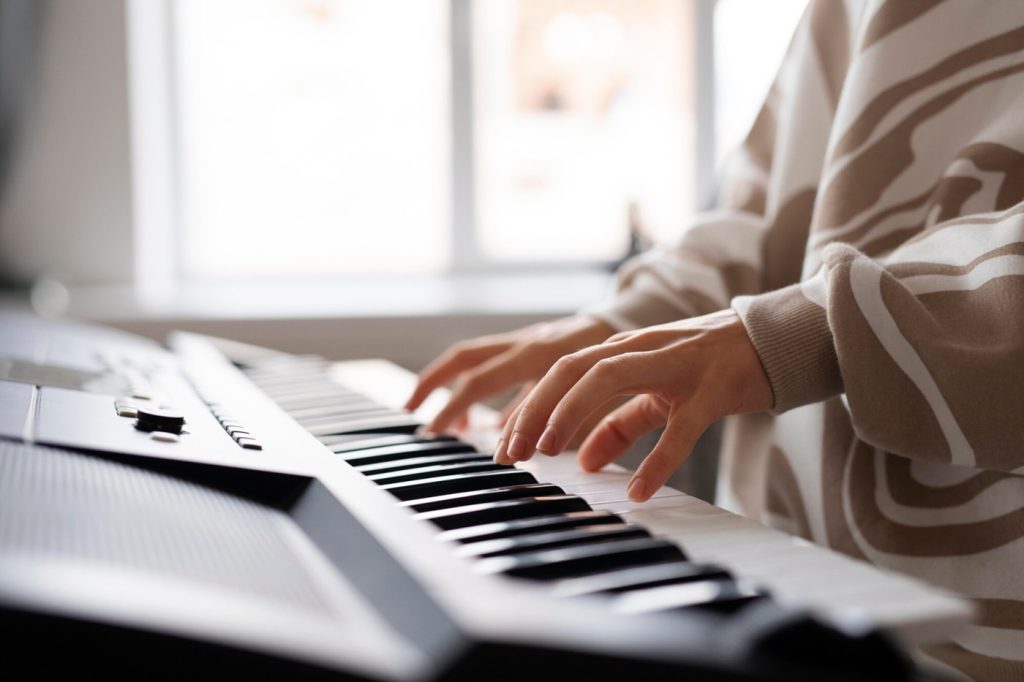Blog
The Role of Dynamics in Piano Performance
Dynamics are one of the most important aspects of piano performance, often serving as the emotional language of music. They provide texture, intensity, and contrast, guiding the listener through the emotional highs and lows of a piece. Whether you’re playing a soft, intimate passage or a powerful, dramatic crescendo, dynamics help you convey the heart of the music, adding depth to your interpretation and making your performance more expressive. In this article, we’ll explore the role of dynamics in piano performance, the various dynamic markings you’ll encounter, and tips for mastering them.
What Are Dynamics in Music?
In music, dynamics refer to the volume of sound—how loud or soft the music is played. The term can describe both the intensity of individual notes or phrases as well as changes in volume throughout a piece. Dynamics are essential in conveying the emotional content of the music, as they help create contrasts between different sections, emphasize certain moments, and establish the overall mood.

On the piano, dynamics are shaped by several factors, including the velocity of the key strike, the amount of pressure exerted on the keys, the use of the pedals, and the overall control you have over the instrument.
Dynamic Markings in Piano Music
In piano music, dynamics are indicated by specific markings above or below the staff. These markings are a guide for how loud or soft a section of music should be played. Some of the most common dynamic symbols include:
- p (piano): Play softly.
- f (forte): Play loudly.
- mp (mezzo-piano): Play moderately softly.
- mf (mezzo-forte): Play moderately loudly.
- pp (pianissimo): Play very softly.
- ff (fortissimo): Play very loudly.
- sfz (sforzando): Play with a sudden emphasis or accent.
- crescendo (cresc.): Gradually increase the volume.
- decrescendo (decresc.) or diminuendo (dim.): Gradually decrease the volume.
- fortepiano (fp): Start loudly and then immediately become soft.
These markings are meant to give you a framework, but it’s up to you as the performer to interpret them in a way that fits the style and emotion of the piece.
The Importance of Dynamics in Piano Performance
1. Creating Contrast and Drama
One of the most powerful roles of dynamics is their ability to create contrast. The sudden shift between loud and soft passages can provide dramatic tension and release, heightening the emotional impact of the music.
For example, many classical piano works employ sudden dynamic shifts to enhance the expressive range. A dramatic forte section followed by a gentle piano passage can evoke a sense of surprise, vulnerability, or contemplation. The use of crescendo (gradually getting louder) or decrescendo (gradually getting softer) can further add a sense of development and narrative flow.
Dynamic contrasts can also be used to distinguish different themes within a piece. A forte theme might represent strength or excitement, while a piano theme could convey calmness, intimacy, or melancholy. This duality adds emotional depth to the piece and keeps the listener engaged.
2. Conveying Emotion
Music is often seen as an emotional language, and dynamics play a critical role in communicating those emotions. The softness of a piano or pianissimo passage can express tenderness, fragility, or sadness, while the volume of a forte or fortissimo passage can evoke power, joy, or anger. How you manipulate dynamics shapes how the listener perceives the emotional tone of the music.
For example, in Beethoven’s Moonlight Sonata, the opening movement is played with a soft, dreamy piano dynamic, which creates a sense of intimacy and reflection. In contrast, the third movement explodes with sudden fortissimo chords that convey intensity and urgency. These shifts in dynamics help to tell the story of the piece, transforming it from calm to stormy.
3. Adding Color and Texture
Dynamics can also help shape the color and texture of the music. By varying the volume of your playing, you can create layers within the sound. A piano passage played with soft, light touch may feel airy and delicate, while a forte section with more forceful playing may sound rich, bold, and powerful. These subtle changes in dynamic range give music its tonal variety.
For example, in Chopin’s Nocturnes, the use of dynamic subtleties—like pianissimo notes in the left hand against a louder melody in the right hand—creates a shimmering, almost ethereal effect. The dynamics allow the music to feel multi-dimensional and vivid.
4. Shaping Phrasing and Musical Punctuation
Dynamics can guide the phrasing of a piece, helping you shape each musical phrase in a natural and musical way. By subtly varying the dynamics within a phrase, you can emphasize certain notes or create a sense of movement.
For instance, when playing a long melodic line, you might gradually crescendo towards the climax of the phrase and then decrescendo as you approach the end, giving the phrase a sense of forward motion and resolution. Similarly, dynamic markings can be used to highlight certain notes or chords, almost like punctuation in a sentence, providing a sense of emphasis or pause.
Techniques for Mastering Dynamics
To use dynamics effectively in piano performance, you need to develop both physical control and interpretive insight. Here are a few techniques that can help you master dynamics:

1. Practice with Control and Precision
When practicing dynamics, focus on control over your hand, wrist, and fingers. Practice playing at different volumes, from very soft pianissimo to very loud fortissimo, and pay attention to the clarity and evenness of each note. For example, if you’re practicing a loud passage, make sure the sound doesn’t become muddled or uncontrolled.
You should also practice playing crescendo and decrescendo gradually, making sure the dynamic shift is smooth and intentional. Use a metronome to practice these transitions slowly before increasing the tempo.
2. Focus on the Touch and Pedal
Your touch—how you press the keys—affects the dynamic outcome. A light touch will create a softer sound, while a heavier touch will produce a louder sound. Experiment with varying degrees of pressure to see how it impacts the tone.
Pedal usage also affects dynamics. The sustain pedal can create a fuller, more resonant sound in louder passages, while using the una corda pedal (soft pedal) can produce a quieter, more intimate sound. Practice using the pedals subtly, maintaining clarity while shaping your dynamics.
3. Visualize the Music
Before performing, take time to visualize how you want the dynamics to flow throughout the piece. Picture the crescendos and decrescendos, the moments where the music should swell and where it should retreat. This mental preparation will help you maintain control during performance.
You might also want to practice improvising with dynamics in pieces you already know. Play a familiar piece with exaggerated dynamics to experiment with how the music feels at different volume levels. This will help you gain confidence in using dynamics as a tool for expression.
Tips for Expressive Dynamic Interpretation
- Start soft, then build: When using a crescendo, avoid rushing to the louder dynamic too quickly. Allow the sound to build gradually and naturally, as though the music is growing organically.
- Use contrasts wisely: Extreme contrasts can be effective, but they should always serve the music. For instance, a sudden fortissimo after a long passage of pianissimo can be striking, but it should be intentional and not jarring.
- Consider the stylistic context: Different composers have different expectations when it comes to dynamics. For example, Baroque music tends to be less dynamic in contrast to Romantic works, where changes in dynamics are often more pronounced. Be sure to research the stylistic nuances of the period you’re playing.
- Emphasize key moments: Use dynamics to bring out important moments in the music. In a theme and variations, for example, you might highlight the main theme with a louder dynamic, contrasting it against softer variations to show their difference.
Conclusion
Dynamics are an integral part of piano performance, giving you the ability to shape the emotional landscape of a piece. By mastering the control of dynamics, you can transform a simple melody into a vivid, expressive musical experience. Whether it’s through subtle gradations of volume, sudden contrasts, or the careful shaping of phrases, dynamics help you communicate the depth and complexity of the music. By continually refining your technique and incorporating dynamics thoughtfully into your practice, you’ll be able to elevate your piano playing to new heights, making every performance more captivating and memorable.


